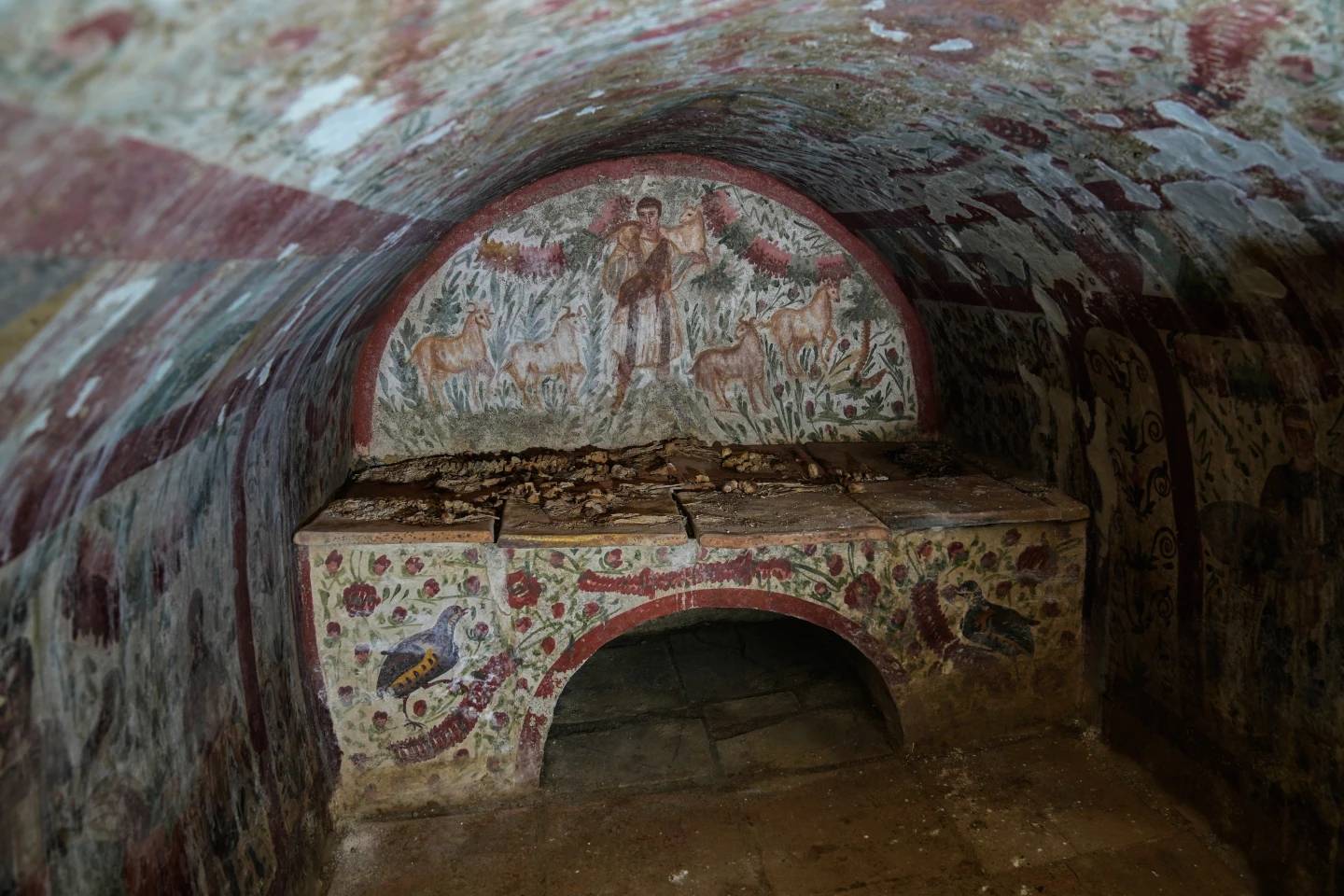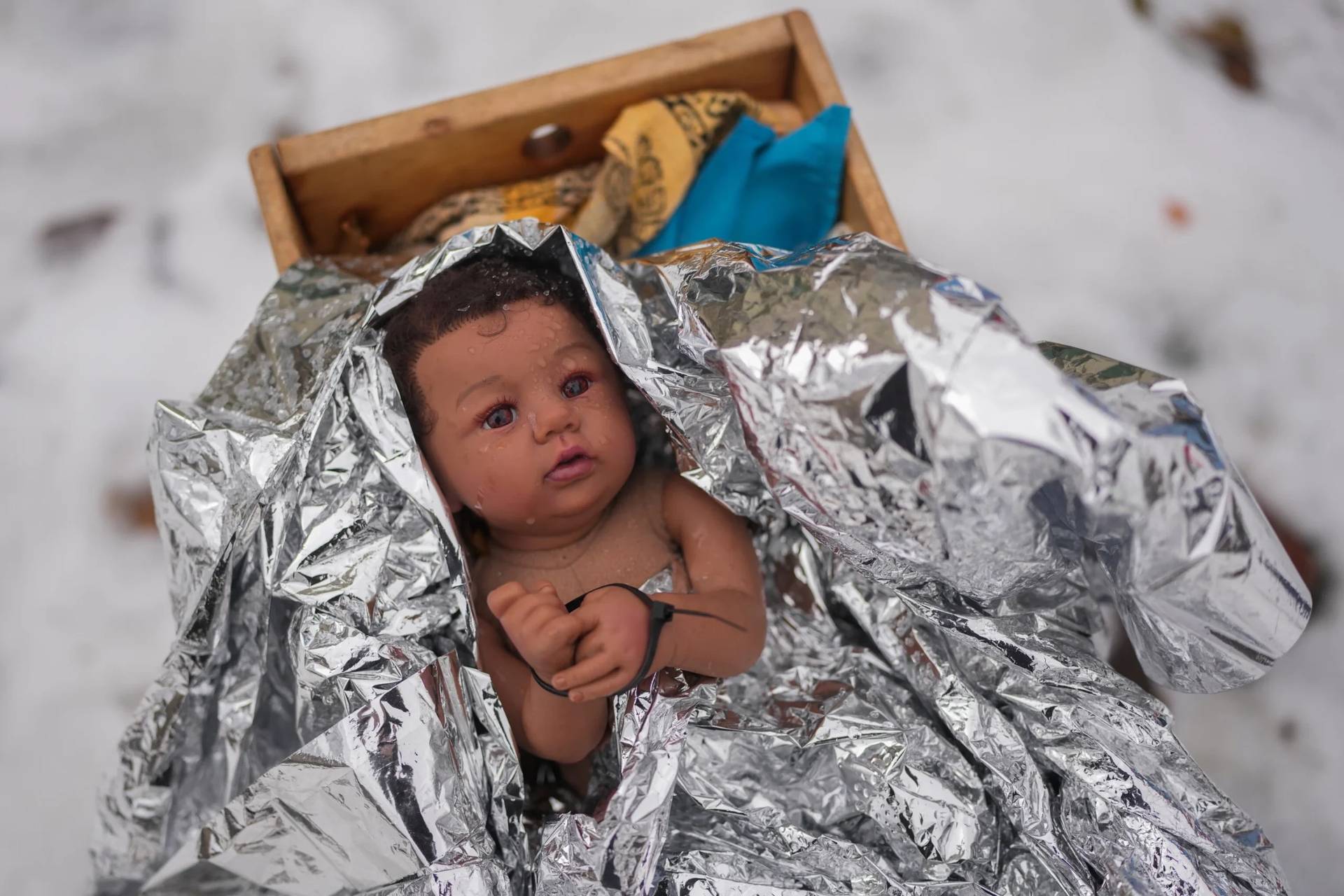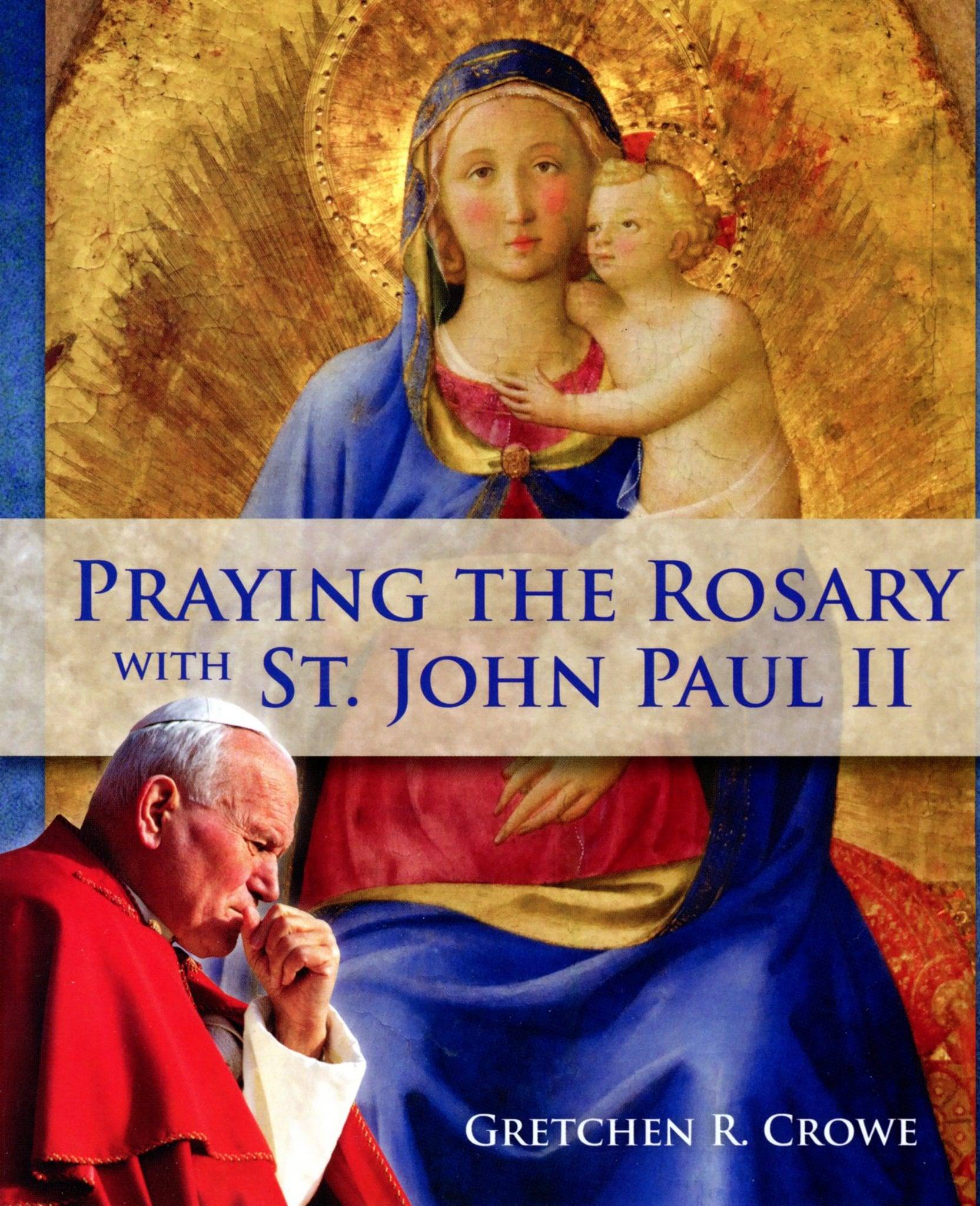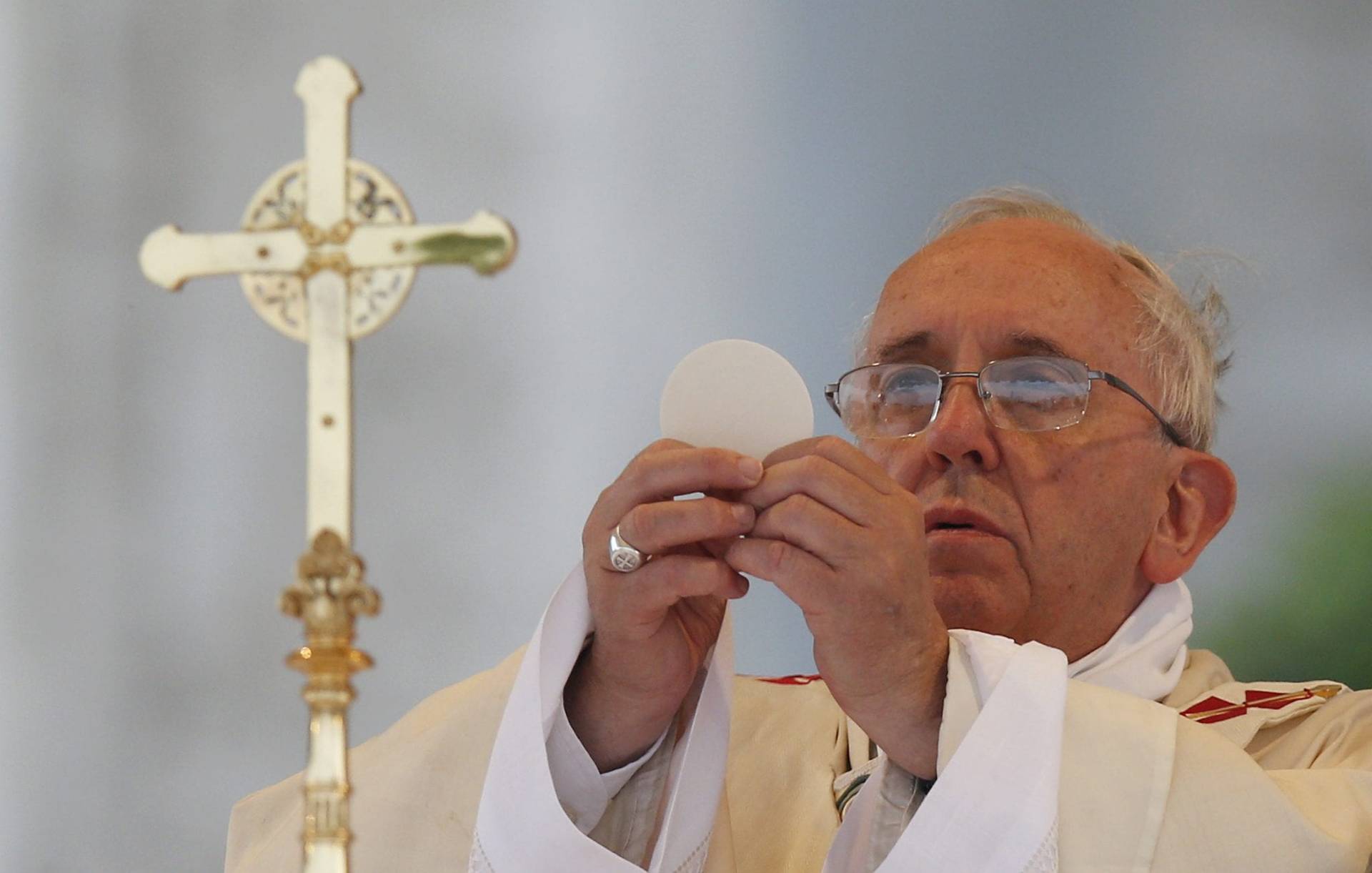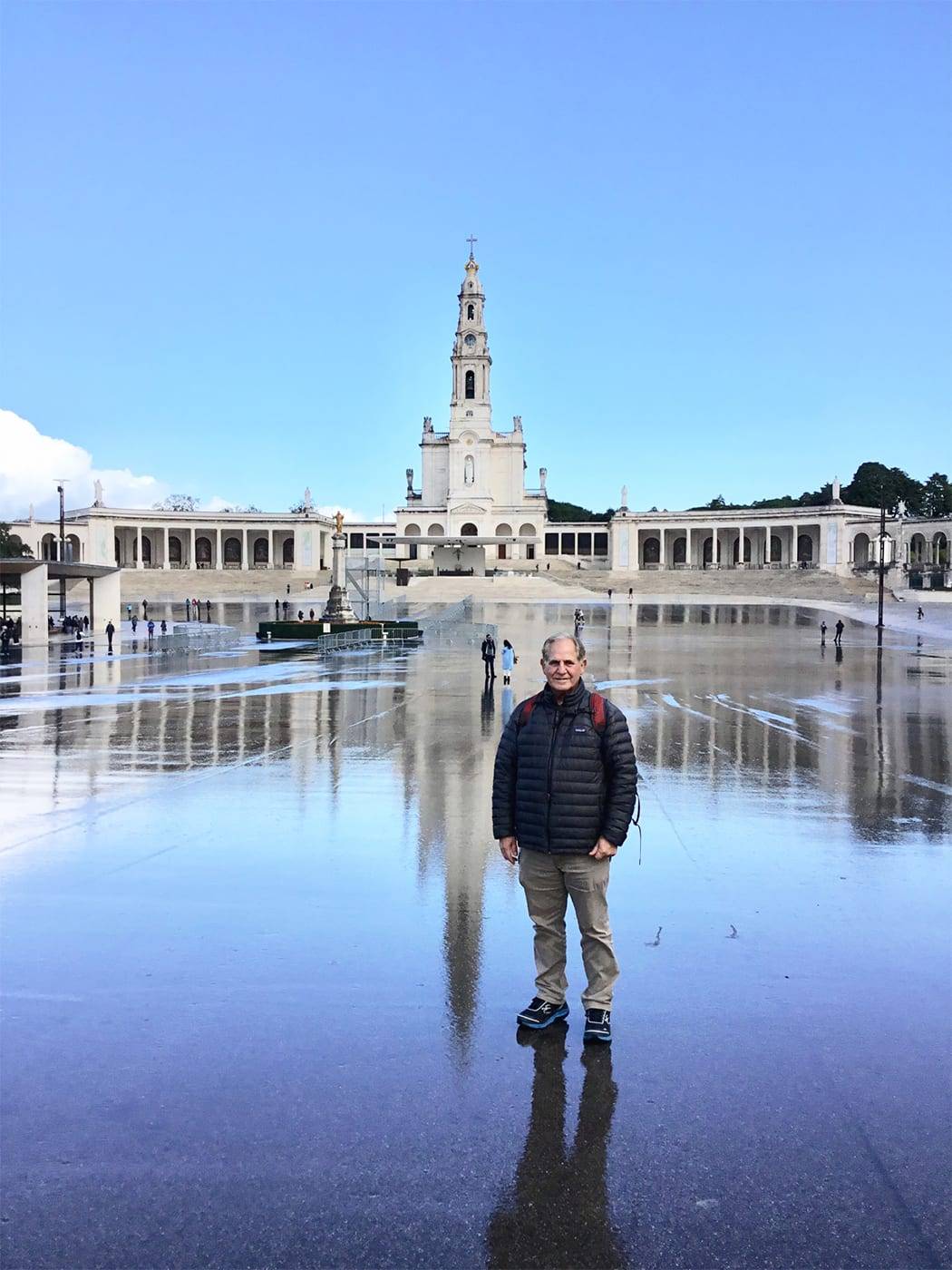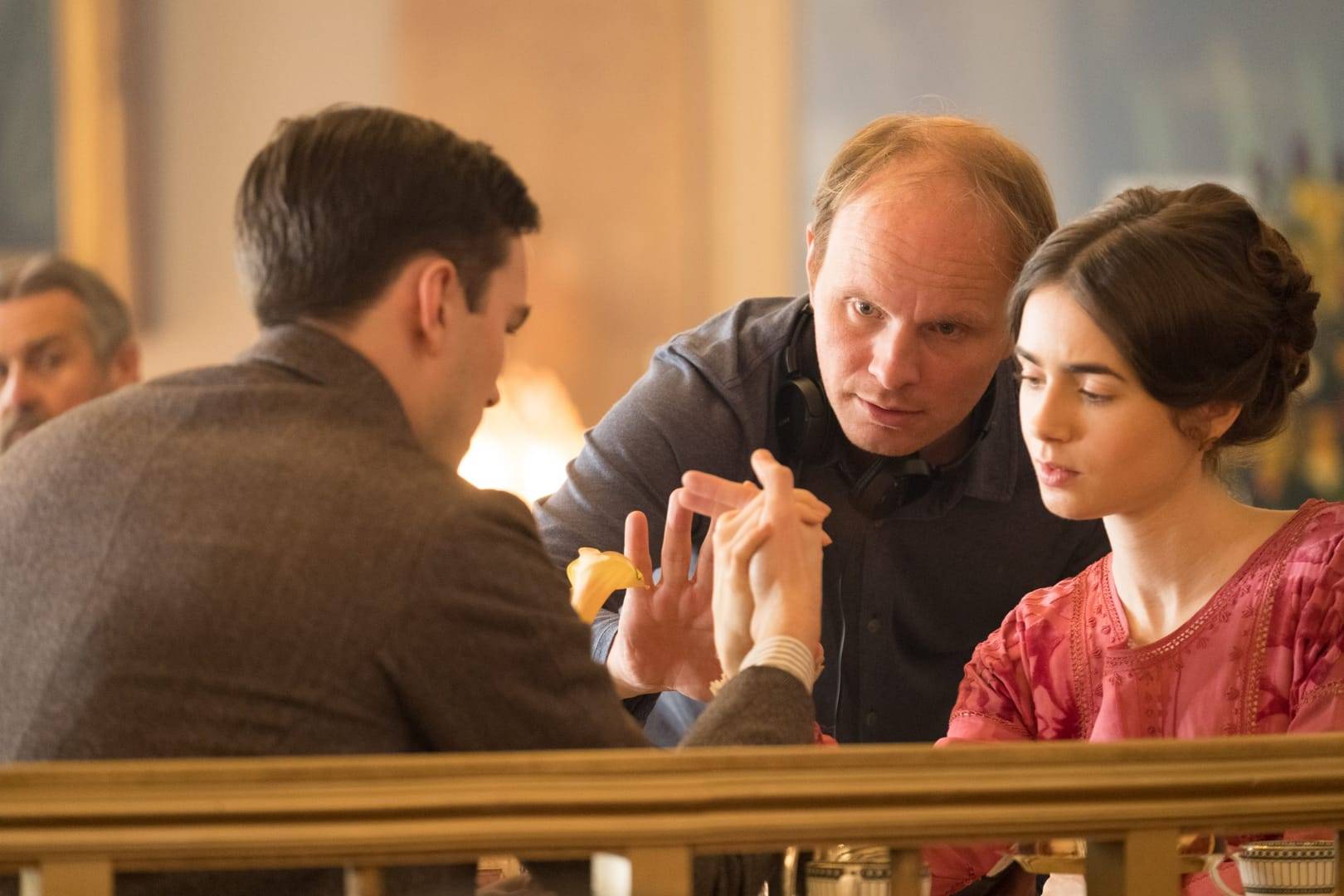The following is an excerpt from “If Nuns Ruled the World,” a book published this month by Open Road Media that profiles 10 nuns doing extraordinary work. This is Chapter 5: “An Underground Railroad for Modern-Day Slaves.”
What had I done?
I covered my eyes with my hands and splayed them apart just an inch to see a nineteen-year-old Asian woman on the movie screen in front of me handcuffed and whipped by a dominatrix while her pimp looked on menacingly, smoking crystal meth out of a dirty pipe.
Sitting next to me was an unfailingly proper British nun in her sixties, my guest at this film premiere of a movie called Eden, which tells the story of a Korean American girl sold into sex slavery.
With each increasingly sexualized scene (a male sexual organ is bitten off in the middle of the film), I became more convinced that I’d made the same kind of mistake I had made when I watched Brokeback Mountain with my conservative father.
“We can leave,” I whispered during a particularly disturbing scene.
Sister Joan Dawber just shook her head a little.
“I may close my eyes if this gets to be too bad,” she replied, as calm as ever. I was the one shielding my face for most of the movie.
I was surprised when Sister Joan took me up on my offer to see Eden. I forwarded her the invite only moments after it arrived in my inbox, not really expecting a response, just thinking it could be the kind of thing she would be interested in, wanting to be friendly. I had actually forgotten that I had even sent it until she wrote back to me three days later:
Thanks for this very kind invitation, Jo. Yes, I am planning to join you, however, I have a meeting from 5:15–6:15 in Queens then I will drive into the city. Let me know where we should meet. Thanks.
She was waiting for me when I arrived and wrapped me in a warm hug in front of the Film Forum on a dimly lit block of West Houston Street in Manhattan, about thirteen miles from her home in Queens.
“I can’t believe I drove in here so late, look at me!” she said, spreading her arms wide and looking up at the slightly shabby neon-blue marquee. “So this is where the artsy people all hang out.” Sure enough, a group of black-turtle-necked, dark-rimmed-glasses-wearing hipsters elbowed past us through the glass doors, knocking Sister Joan into me. She just laughed and grabbed my arm as we walked into the theater.
Thirty minutes later, I was nervously checking that Sister Joan was all right. I didn’t need to be nervous. As the executive director of the LifeWay Network, running one of only three safe houses in New York City for women survivors of human trafficking, she hears stories worse than the ones portrayed in Eden every single day.
She has a dangerous job.
The location of the house is kept secret from everyone but a select few other nuns and volunteers who help Sister Joan with the house operations. If its location were made known, the lives of the sisters who run it and the women they are trying to protect would be in jeopardy. The majority of the people, mostly men, who traffic the women are still at large, and Sister Joan is essentially stealing from their bank accounts by harboring their chattel.
In nun circles, word of mouth travels fast, so I had heard stories about Sister Joan well before I met her. One afternoon, I was taking the Staten Island Ferry with Sister Simone Campbell and the rest of the “Nuns on the Bus.” As the crowd of sisters, most with short gray hair and sensible wash-and-wear outfits, power-walked their way commandingly through Whitehall Station to board the boat across the New York Harbor, I explained this book project to them.
“It’s about how badass nuns are. You know, all of the great work you guys all do,” I explained, giving my elevator pitch. They began buzzing among themselves, many of them having the same thought at the same time.
“You have to meet Joan Dawber,” one sister with a particularly gravelly voice told me. “She rescues sex slaves . . . has a safe house for them.” Soon everyone within earshot agreed that I had to meet her, and I was provided with three different ways in which to contact her. That is how things with nuns usually happen. They are quick to come to a consensus and convince you their consensus is the exact course of action needed in order to find an elegant solution to a problem. If nuns ran the world, things would just get done. No questions asked.
I set about convincing Sister Joan to meet with me. After months of e-mailing with Arlene, Sister Joan’s watchdog of an administrative assistant, we met for the first time just a couple of weeks before going to see Eden. In person, Sister Joan is the last woman you would expect to be running a dangerous modern-day Underground Railroad. Her voice has a melodic singsong like Julie Andrews’s Maria in The Sound of Music, which can immediately put anyone at ease. She is slight and quick in movement. Her face is unlined and quite beautiful. She wore a heather-gray cardigan, nearly the same color as her short but stylish hair that just brushed her earlobes, the sweater drowning her birdlike wrists. New York City had been overwhelmed with a small blizzard that week and I arrived on her doorstep in Forest Hills, Queens, covered in ice and snow, my socks soaked through to my feet and makeup dripping down my face.
“Oh, I didn’t think you would actually make it here,” Sister Joan fussed as she let me in the door. I had expected someone bigger, maybe burlier, someone who could take down the kinds of men who hold women in captivity. I marveled at little Sister Joan.
She busied herself with taking my coat and scarf and getting me settled into a chair next to her desk so she could tell me her story.
Back in 2001, a group of six hundred female congregation leaders from around the world, known as the Union of Superiors General, met in Rome for a conference to discuss the issues they believed nuns should be tackling in the twenty-first century. One contingent of sisters from Africa was very vocal about the need for sisters to address the growing global problem of human trafficking.
That inspired the congregational leader of Sister Joan’s order to send out a letter asking her sisters to take a closer look at the issue. When Sister Joan took it to heart, her Mother Superior joked that Sister Joan was the only one who ever bothered to read her letter.
“When I read about it, I felt squeamish,” Sister Joan said. “It was a world I didn’t want to get to know.” She didn’t want to fall down the rabbit hole of something so “wounded and violent and stripped of hope.” But she felt called to pray on it.
“I didn’t even want to look at it because it was too upsetting,” she said. “I thought I would just pray about it . . . but of course, when we pray, it isn’t the other people who are changed, it is us who get changed, and as I prayed I got stronger. I knew there was a desire in me to assist. I can’t explain it any better than to just say that it became clear to me. I had a sense that I could make a difference.”
In 2005, at a conference on human trafficking in Baltimore run by the Migration and Refugee Services branch of the United States Conference of Catholic Bishops, Sister Joan found a group of like-minded religious folks who wanted to tackle the issue with her. It was God’s divine providence that had brought them all together in the same place, she told me. The seven sisters at the conference hailed from five different congregations in New York. During their meeting they decided to form a coalition and met later that year at the motherhouse for the Sisters of Charity of New York on September 28, 2005. Sister Mary Heyser, RSHM, chaired the meeting and became the glue for the group that would be known as NY-CRC-STOP: New York Coalition of Religious Congregations to Stop Trafficking of People.
Human trafficking is defined by the US State Department as “activities involved when one person obtains or holds another person in compelled service.” International, national, and state laws provide varying definitions, typically emphasizing the exploitation of another human being. To Sister Joan, human trafficking is no less than modern-day slavery.
“If you think about how individuals were taken against their will, used as commodities, and sold as commodities, that is what is happening today in the experience of human trafficking. Individuals are tricked through all kinds of ploys. Unlike slavery in the past, it isn’t along racial lines. It is among the vulnerable population.”
After those first meetings with like-minded religious folks, Sister Joan racked her brain thinking about how she could provide something of actual value to the victims.
The key, she believed, was safe housing. These women couldn’t do anything until they had a safe place to live. She asked her order if she could give up her full-time work in parish ministry to work on the trafficking issue on a more regular basis. When they agreed, she started her research full-time.
“Joan and I tried to visit places with safe houses so we could get a feel for the setup and meet women who were living there,” Sister Mary Heyser explained.
Like a holier version of Thelma and Louise, the pair hit the road together, traveling across the country to California to see one of the only safe houses in America specifically designated for the safe housing of women. There, the Coalition to Abolish Slavery & Trafficking welcomed the sisters and gave them a tour of their grounds.
“We were actually really honored to be able to do that. They didn’t do that for other people,” Sister Joan said.
Standing in the garden after they’d walked through the house and met the women staying there, Sister Joan met Sister Mary’s gaze. Both women knew there was no turning back.
“I said, ‘Mary, we are really going to do this,’” Sister Joan recalled to me, mustering that same fresh determination and sitting up straighter in her chair.
“That was when I had this gut sense that I was truly doing what I was meant to be doing,” she said. “A feeling inside me just confirmed that.”
Her work began in a small room with nothing but a computer.
With seed money from her congregation, Sister Joan officially created LifeWay Network, a nonprofit that would provide housing for victims of trafficking and education about the reality of human trafficking, in 2007. LifeWay’s first challenge was finding an actual house for the survivors, one that they would be able to keep a secret. At first, Sister Joan tried to leverage one of the many houses owned by different religious communities across the city. Most of them had plenty of rooms to spare, given the aging population of their communities. Nearly all of the orders Sister Joan contacted were willing to offer hospitality to the women on a temporary basis, keeping them safe for a night or two in the very early days after they broke free from their captors. Before long, LifeWay had five convents working with them to provide an Underground Railroad for emergency housing. Soon after, Sister Joan secured a single house that would provide more permanent housing, where women could spend up to a year in order to get on their feet.
“It was kept very quiet,” Sister Joan said. “We didn’t want people to know what we were doing. The word ‘trust’ is very important when we speak about victims of human trafficking because it has totally been eradicated and violated for these women. I think the greatest need is the safety; before you have that safety factor, nothing else seems to make sense. They aren’t comfortable to try anything else.”
Trafficking survivors hide in plain sight. The signs of slavery are vague. “They can include a person who is afraid, doesn’t speak the language, has someone else speak for them, a person maybe who has moved several times,” Sister Joan explained to me. “Maybe there is no eye contact, signs of bruising. You may think that your maid in your room or your waiter or the woman at the massage parlor all have legit jobs, but in some cases that isn’t true. To identify victims of human trafficking is a difficult thing.”
Today, LifeWay partners with social-service organizations like Safe Horizons and New York Asian Women’s Center to reach out to survivors. When there is a raid or a person is found by law enforcement, officials contact Sister Joan to see if the survivor can live in her safe house.
Staffed by three nuns, a house manager who lives there full-time, and a part-time social worker, the house feels very different from the sterility of a shelter.
“It is a strong sense of community being with the women, rather than it being a boardinghouse kind of thing,” Sister Joan explained. “There is somebody at the end of the day who wants to know how you are doing, is everything OK, what was your day like . . . without being intrusive and asking questions about their trafficking situation.”
The women come to Sister Joan completely broken, having been abused and tortured physically and mentally. She told me she doesn’t push the women to talk to her about what they have gone through. She doesn’t need to ask questions to learn about their scars.
“To say a person has been trafficked is to say they have had their freedom taken away from them through force, fraud, or coercion,” Sister Joan said. “They are treated like a commodity, not a person, and their humanity is stripped away from them. This is done in insidious ways: abusive behavior, rapes, starvation, the withholding of food, and the forced use of drugs. Sometimes they will be forced to have sex with up to twenty people in a day. That is like a chain around their brain,” she says. “The trafficker finds something to hold them. They tell them that their family or their child will be harmed or killed.”
The former slaves barely know how to live and behave as free individuals once they are finally out of their captors’ grip.
It takes time before they begin to feel safe and move freely as themselves. Safety is the number-one priority at the house, which has one of the best security systems money can buy. The women are instructed to never answer the doors themselves.
The very first woman who walked through the doors of Sister Joan’s safe house, a victim of labor trafficking, burst into tears when she saw her very own bed, where she could sleep without worrying that someone would abuse her in the middle of the night.
“Oh my God, this is beautiful,” she said, over and over again.
It is beautiful. Sister Joan and her staff were meticulous in making sure that the safe house felt like a home. Every woman has her own bed, her own dresser, her own small night table.
“Setting the house up was one of the fun things we got to do,” Sister Joan said with a lilt of delight in her voice. “We had the entire staff hanging curtains, washing windows, and making sure everything was homey and well done.” Most of the furniture was donated secondhand, but Sister Joan made sure the beds were brand-new. It was important to her that the women have new beds. LifeWay even created a registry with Target to outfit the home, providing the women with dishes, knives, forks, a toaster, a fridge, even a television. To protect the safe house’s location, they had all of the gifts delivered to LifeWay’s Forest Hills office. The nuns schlepped everything out to the safe house themselves.
One of the former slaves told Sister Joan that living in the house was like being able to live with her mother all over again. Another young woman was thrown her very first birthday party at the house.
“She had never had a birthday party. You should have seen her face. We had so many candles on the cake, we almost burned the house down. Everyone’s face was lit up by all those candles,” Sister Joan remembered.
During the day, the women in the safe house work on rebuilding basic life skills, the kind most people take for granted. Many haven’t sat at a table to eat in years. In their other lives, they had been forced to sit in corners and beg for food scraps.
“They have been treated like animals,” Sister Joan told me, disgusted more by the idea every time we speak about it.
“They were never allowed to come to the table. When they get to us, they are amazed that they are allowed to sit at a table and have real conversations. That is one of the healing parts of the community, the fact that we are all one group, eating together.”
Many of them don’t speak English at first, so the LifeWay staff teaches them ESL. In the house, English is spoken almost all of the time.
“The main thing in the end is that the women want to be able to work and be independent, and all we do is work to help them achieve that goal,” Sister Joan said. “What about education? What is the level of education they need?” They study for their GEDs. One woman recently trained to be a nurse’s aide. If they don’t have their immigration status, LifeWay works with them and finds a lawyer to assist them. And finally, they try to find a way to prosecute the traffickers who sold them in the first place.
“All of those things are huge; nothing is small,” Sister Joan says. “You put the trafficked person in the middle and all the spokes coming out are all the services needed to bring that person back to who they were, to create safety and trust and let them know how precious they are as a human person. All of that is necessary.”
Most important, just being around people who don’t treat them like property makes them believe they have value again.
There is a lot of darkness in Sister Joan’s days. The very idea of human slavery once turned her stomach; now she lives it and breathes it. Instead of wanting to turn away, she told me she wishes she could spend even more time with the women and less time focusing on the administrative tasks that keep the roof over their heads. The key to her stamina is knowing how to unwind.
“I enjoy reading novels,” she said. “I love to do my gardening. I exercise every day. For me, the exercise is the key to burning off any negative energy. I notice, when I don’t do it, I am crabbier and more tired.” The five other Sisters of Halifax with whom she lives help to bolster her spirits. Together they form a family-like unit. “I could never do this kind of work if I didn’t have the kind of support that I get from them,” Sister Joan says. Each morning they pray together in community. They pray for one another and they pray for the women that Sister Joan protects.
Taking time out for prayer and contemplation is another thing that keeps Sister Joan sane, and the way she enters into a time of prayer makes sense even to someone who isn’t at all religious. Prayer, for her, is a time outside the everyday droning of distraction from e-mailing, texting, and decision-making. It is a time of contemplation and silence in a world gone crazy.
She lamented to me that in our modern lives, most people, herself included, have no time to be silent.
“We have iPhones and iPads and i-everything. We are always connected these days. We have no space for quiet unless we carve it out,” she said, telling me that she sets aside a special time each day, typically in the morning, for prayer.
Sister Joan changes up how she prays from one day to the next. It can be a meditation on a particular issue or person or it can be less specific, just holding that person or issue in her thoughts. Sister Joan compares a lot of what she does to the Buddhist style of meditation. “It isn’t even really thinking about something. It is more holding it and being contemplative. It goes beyond thinking. When we are thinking, we use our minds. We are trying to control things. We just have to let ourselves contemplate, be still, and let go. It is difficult, but that is God’s gift to us. It is like eating and breathing. If I don’t set aside time for prayer, I can’t live.”
Sister Joan became a nun late, relative to the rest of the women I worked with for this book. She never felt the early tug of a calling that most nuns will tell you they experienced in childhood or their early teens.
“I never wanted to be a sister,” she says. “When you are a Catholic girl growing up, people always ask you if you want to be a nun. I said no. I always liked a guy too much or liked something else too much.” But by joining later in life, she was able to bring rich experiences to a life now devoted completely to God.
One of six kids, with a mom who stayed at home and a dad who worked various jobs as an accountant, never making much money, Joan lived a simple childhood in England. Looking for a new adventure, Joan moved to Bermuda in her late twenties and soon found work in the island’s booming hospitality industry, where she started out as a front-desk clerk and quickly moved up the ranks. She first encountered the poor while working in one of the luxury resorts on the upmarket island. As the general manager’s assistant, she ran the personnel department for the hotel, where she met the gardening staff, composed mostly of immigrants from the Azores, as well as the men and women who worked in the kitchens.
“They were so humble and beautiful. I began working with the poorer guys who did the gardens and the people who worked in the kitchens and the back areas, all the parts the [guests] never see, and I got the feeling that these people needed a voice,” Sister Joan told me. “I began to feel the draw of religious life mainly because I wanted to work with the poor.” She spent less and less time around the island’s elite and more and more time with the Sisters of Charity of Halifax, whose focus was on education and caring for the poor. At one point, while living in Bermuda, Joan juggled three different boyfriends, one of whom she knew wanted to marry her.
“I just knew it wasn’t enough,” she said, in hindsight, of the possibility of getting married. “I know that is an awful thing to say about another human being, but it is true. He just wasn’t enough, and I knew that I was meant to do something different.”
When she finally joined the Sisters of Charity of Halifax, they gave her the option to choose a community in Nova Scotia, Canada, or in New York City. Sister Joan chose New York because she thought it would be exciting, a new adventure like Bermuda had been, and over the next several years she attended St. John’s University before receiving a master’s in pastoral studies at Loyola University of Chicago. She ultimately returned to New York City to settle into parish life.
“When people hear about human trafficking, they think it is overseas and faraway. Really, it is very prevalent in the United States,” Sister Joan said. But the five boroughs of New York are one of the busiest hubs for trafficking in the United States due to their transient nature, plethora of airports and trains, and a culture where people don’t ask too many questions.
Between May and December of 2010, LifeWay Network and Hofstra University’s Department of Sociology conducted a survey of service providers and law enforcement agencies to try to determine the number of people trafficked within New York City and to shed light on the need for and availability of social services. Based on data from that survey, they estimated that private service providers in the New York City metropolitan area interacted with at least 11,268 survivors between 2000 and 2010, considerably exceeding previously released official estimates.
Sister Joan worries about money. She operates LifeWay on an annual budget of just $200,000 but is constantly thinking of ways to raise more cash. She has dreams of opening a second safe house and ultimately finding permanent housing and support for survivors. The Hofstra survey found that more survivors would benefit from long-term or transitional housing than they would from emergency housing. But despite this need, they found that safe and affordable long-term housing is virtually nonexistent, with only 3.9 percent of victims who need housing actually receiving it.
In 2012, President Barack Obama made an impassioned commitment to crack down on human trafficking in a campaign speech at the Clinton Global Initiative.
“It is barbaric and it is evil and it has no place in a civilized world,” the president told the audience members, among them Queen Rania Al Abdullah of Jordan, Mexican president Felipe Calderón, Rwandan president Paul Kagame, former Secretary of State Condoleezza Rice, and Treasury Secretary Timothy Geithner, at the Sheraton New York Hotel and Towers in Midtown Manhattan. “Nations must speak with one voice: our people and our children are not for sale,” he said. That kicked off efforts from the White House to raise awareness of trafficking and to find ways to fund initiatives that could make strides in combatting it. A year later, Sister Joan learned that LifeWay was named a finalist in a competition for $1.8 million in public and private funding that would allow them to open a second safe house for younger women, aged eighteen to twenty-four, and implement new social services to provide them with sustainable aid.
The finalists were told they would participate in a three-day “Innovation Workshop” in Washington, DC, in January 2014, where they would be paired with expert coaches from social enterprise development, technology start-ups, medical and mental health experts, and communications and public relations professionals to further refine their ideas. The winner would be selected later in the year.
“That money would change everything for us,” Sister Joan told me breathlessly. “We would be able to focus on more of New York’s young people who have been trafficked. We could focus on economic empowerment and bringing them more social services.”
One Bible passage in particular stands out for Sister Joan when she tries to put her life’s work in perspective. It is a passage from the fourth chapter of the Gospel of Luke, where Jesus declares what God has asked him to do.
The Spirit of the Lord is upon me,
because he has anointed me
to bring good news to the poor.
He has sent me to proclaim release to the captives
and recovery of sight to the blind,
to let the oppressed go free,
to proclaim the year of the Lord’s favor.
“That’s the one that speaks to the call that I have for the work that I do,” she said. “The poor don’t always have to be the economically poor. The poor can be those who have suffered tremendous injustice. God’s reign is about bringing peace and justice to people. I just work towards providing that.”
Jo Piazza is the author of several books. She is a regular contributor to the Wall Street Journal; her work also has appeared in The New York Times, New York magazine, Glamour, Gotham, the Daily Beast, and Slate. She has appeared as a commentator on CNN, Fox News, MSNBC, and NPR. Piazza holds an undergraduate degree in economics from the University of Pennsylvania, a master’s in journalism from Columbia University, and a master’s in religious studies from New York University. She is currently managing editor for Yahoo Travel.





